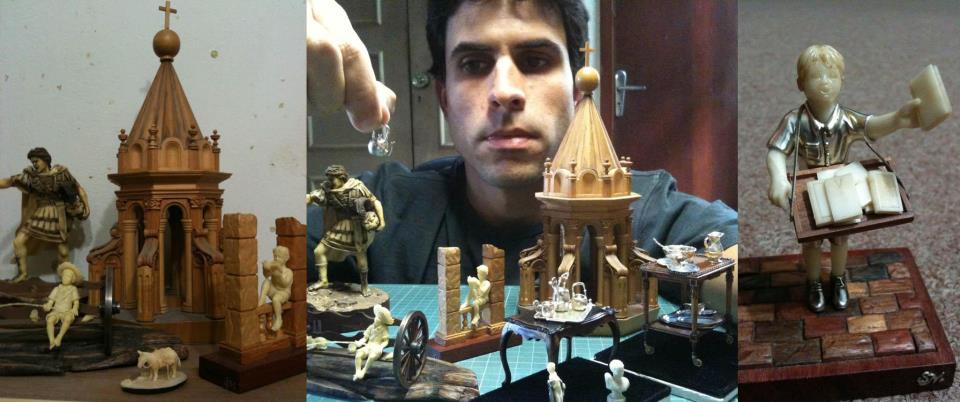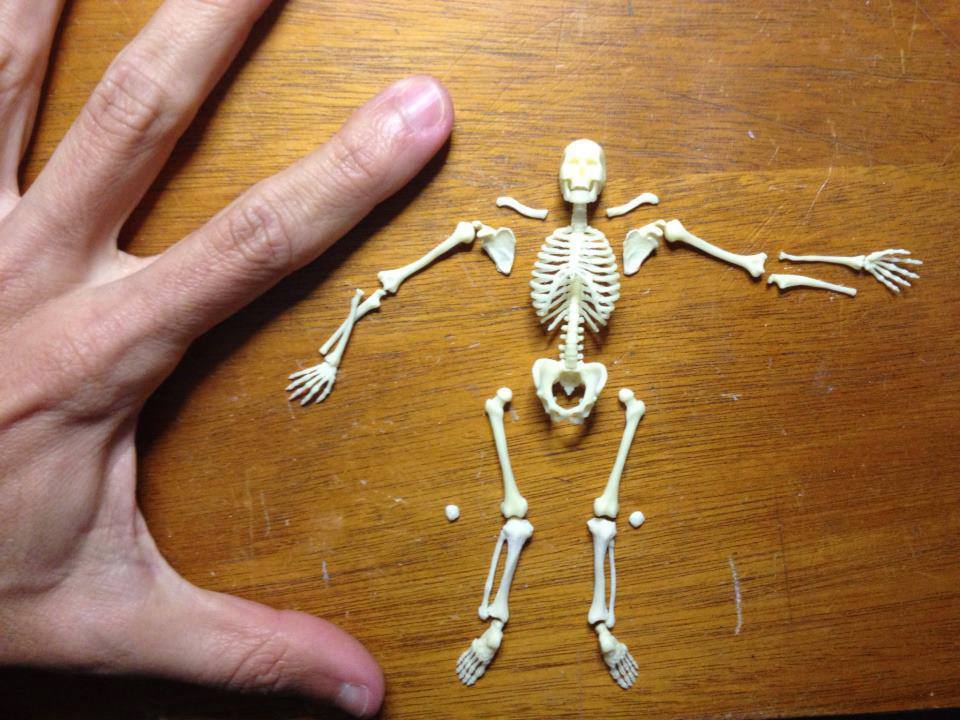Miniatures by Sergio Macedo Netto
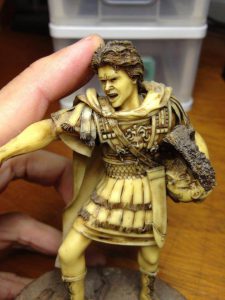 What’s your earliest memory with miniatures?
What’s your earliest memory with miniatures?
Actually, I already made models of houses, buildings, planes, helicopters with paper, glue and ink in my childhood, in the 1980s. But since 1990, (when I was 16 years old) I began to work with better materials like plastics, metal and wood. Around 1990 I also thought to make replicas of real objects in accurate scale. I made a vacuum cleaner, insecticide bottle, guitar, bike, and, of course, airplanes and helicopters (love these machines).
How did you first get started making miniatures?
I’ve been interested in making my own toys since my childhood. I liked toys you had to assemble, like HERING RASTI (similar to LEGO in the 80s), Revell (I built kits of planes and helicopters). I also built cities in paper, using glue, scissors and cut pieces of Starfix to put in the windows of the buildings, to shine in the dark.
Do you remember the first miniature you ever made?
I remember making a building… it was a replica of the Government Palace of São Paulo out of paper. But this model became damaged with time. I made this work in 1983, when I was 9 years old.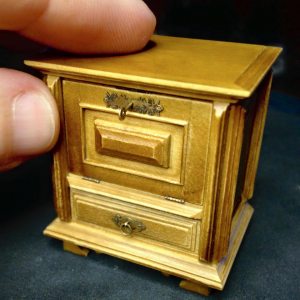
What is your favorite type of miniature to make?
I like to carve miniatures. Materials like wood, wax, jarina (a kind of seed), and resins are good for it.
What is the most challenging miniature to make?
I guess the most difficult miniature was the bedside table with drawers and a key that opens and closes. It was difficult because of the key mechanism.
 What is your favorite type of wood to use for miniature making?
What is your favorite type of wood to use for miniature making?
In Portuguese: Pau marfim (clear wood), easily found in Brazil. I also like to work with Imbuia (dark wood). Both of them are hard and compact woods. The fibers are small, in accordance with 1:12 scale.
What advice would you give to new artists and beginner miniaturists?
Work focused. Be faithful with your vocation. Be true. Money is consequence. The market is global. It’s good to meet people around the world and to trade miniatures. Have patience. You can live in any place in the world. Don’t worry if your city, province, or country is poor or rich. Don’t fear!
Favorite miniature you own by another artist?
I don’t own miniatures of other artists yet. Actually, I’m not a collector.
Favorite miniature you have made yourself?
The Capoeira is the most expensive work that I have made. I also enjoy the miniature violin. It’s a unique piece.
How did you become involved with the International Guild of Miniature Artisans (IGMA)?
I became involved with IGMA in 2015. I had heard about IGMA before, but now I think that I’m prepared to show my recent works to the best artists in the world.
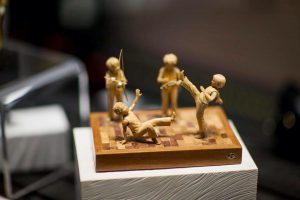 Can you tell us a bit about your experience with Guild School 2016?
Can you tell us a bit about your experience with Guild School 2016?
I went to the Guild School for the first time on a scholarship. My friend Evelyne Martin, a Guild Member, encouraged me to participate. I agreed and I went. I needed to find a way of improving my work with miniatures. I needed to know the market, to meet people in this field. Here, in Brazil, I work alone. There are miniature artists in my country, but for the most part, they make simple works. There isn’t a partnership opportunity to gain knowledge. All the things that I do, I learned alone.
At the Guild School, I learned to work with pottery. I took class with Jon Almeda, a young man with the wisdom of an older master. I understood very well, despite the fact I don’t speak English that well. Jon had patience with me throughout the week.
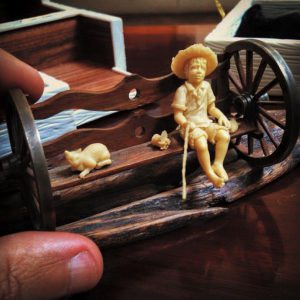 I loved the organization and professionalism of IGMA. All aspects are taken very seriously. I saw that “miniature is not hobby; it is a profession.” I desire to make miniatures for a living. Today, it’s impossible. But if I meet people around the world and those in the global market, I believe it will be possible from now on.
I loved the organization and professionalism of IGMA. All aspects are taken very seriously. I saw that “miniature is not hobby; it is a profession.” I desire to make miniatures for a living. Today, it’s impossible. But if I meet people around the world and those in the global market, I believe it will be possible from now on.
Every job well done inspires me to do better. Any type of work. I saw this throughout the United States. After Castine, I went to New York for a few days, but it was enough to see this too. I realized that American people want to know “Who am I” and “what do I do?” more than they want to know “where am I from?”
Most memorable miniature you have ever seen?
I love many boxes of tools made by William R. Robertson.
What is your hope for the field of miniatures?
I hope one day we can work in partnership with other IGMA members. Like companies collaborate with one another. For example, SHIMANO offers components of high quality to factories that build bicycles like Trek, Giant, and Specialized. At Guild School, I learned and saw that each artist is specialized in one kind of miniature. I can offer an accessory to other artists too, like furniture for a hall or room. I would one day like to make works of art for a Museum of Miniatures, too.
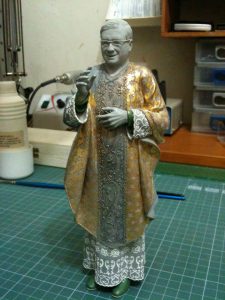 I saw that countries with cold weather are more propitious to work with miniatures. Beside having culture and money, the temperate climate is an important component to this characteristic. So, I can say that the US, Canada, England, Germany, Spain, and Japan are examples of countries in which miniatures have worth.
I saw that countries with cold weather are more propitious to work with miniatures. Beside having culture and money, the temperate climate is an important component to this characteristic. So, I can say that the US, Canada, England, Germany, Spain, and Japan are examples of countries in which miniatures have worth.
In hot countries, like Brazil, and many countries of Africa and Asia, the people want to play soccer, ride a bike, go to the beach on the weekends, and vacation. The problem isn’t only lack of money in these countries. Here, in Brazil, there are a lot of rich people, but these people love to own cars, houses, trips, helicopters. It’s another culture!
Favorite miniature artisans?
I admire woodwork and metalwork of William R. Robertson. I also admire the many silver objects by Pete Acquisto and Dmitri Shevchenko. I can’t forget the miniature animals made by Kerri Pajutee, furniture by David Iriarte, pottery by Jon Almeda, glasses by Winesiam.
What would you like to see replicated in miniature that you have not yet seen?
Sophisticated furnitures like that of Abraham (1711-1793) and David Roentgen (1743 -1807).
I would also like to see Baroque figures carved in wood. Figures out of gold leaf. And little figures out of ivory, or jarina as a substitute, for decorating halls and rooms. I think that I can work with this market niche. All of these incorporate carved material.
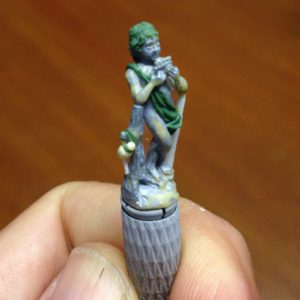 Why miniatures? What appeals to you most about what you do?
Why miniatures? What appeals to you most about what you do?
I love all things that fit into the palm of my hand. Miniatures are actually toys for adults. With miniatures, I also pay attention to the mechanism of the real pieces. I realize that woodwork, metalwork, carved work, and all handmade works in real original pieces are very important for life, at all times. I learn that all kind of work is important, we must valorize the work of other people. Our society is a mechanism of people and works, like a watch.
What’s to come from Sergio Netto?
I intend to make a wooden tea cart, with wheels that work.
Words you live by?
God is watching everything I do. Parts that do not appear must be made with the same care of parts that are visible. Part is as the whole.
Favorite miniature quote?
God is in the details.
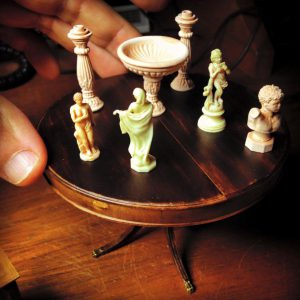 Other activities you enjoy?
Other activities you enjoy?
Yes. I love to go biking and running around my city. I also practice sports.
What do you want miniature fans to know about you?
I’d like to highlight: Every person can be a specialized component in this watch of the life. The most difficult is to find the right place. Just now, I’m 42 years old, and I’m finding my place. I hope to find it definitely.
What’s something that people don’t know about you?
I was healed of a problem without scientific explanation: I had behaviors worthy of autism in childhood. I started talking when I was 4 years old, although I was literate at five years old (my literacy was very fast, according to my teacher at that time). I got out of psychiatric treatment when I was 8 years old. My difficulty in socializing with other people has been decreasing over time, to adulthood. It was very gradual. While all of these things happened, I learned to build toys, models, and make drawings. I discovered and improved my skills. If it was different, maybe I’d not be an artist. Today, I don’t suffer anything at all! I can say now that I will learn to speak better English at 42 years of age.
Sergio Macedo Netto (SM) creates miniatures out of São Paulo, Brazil. To see more of his work, have a look on Facebook and Instagram.
